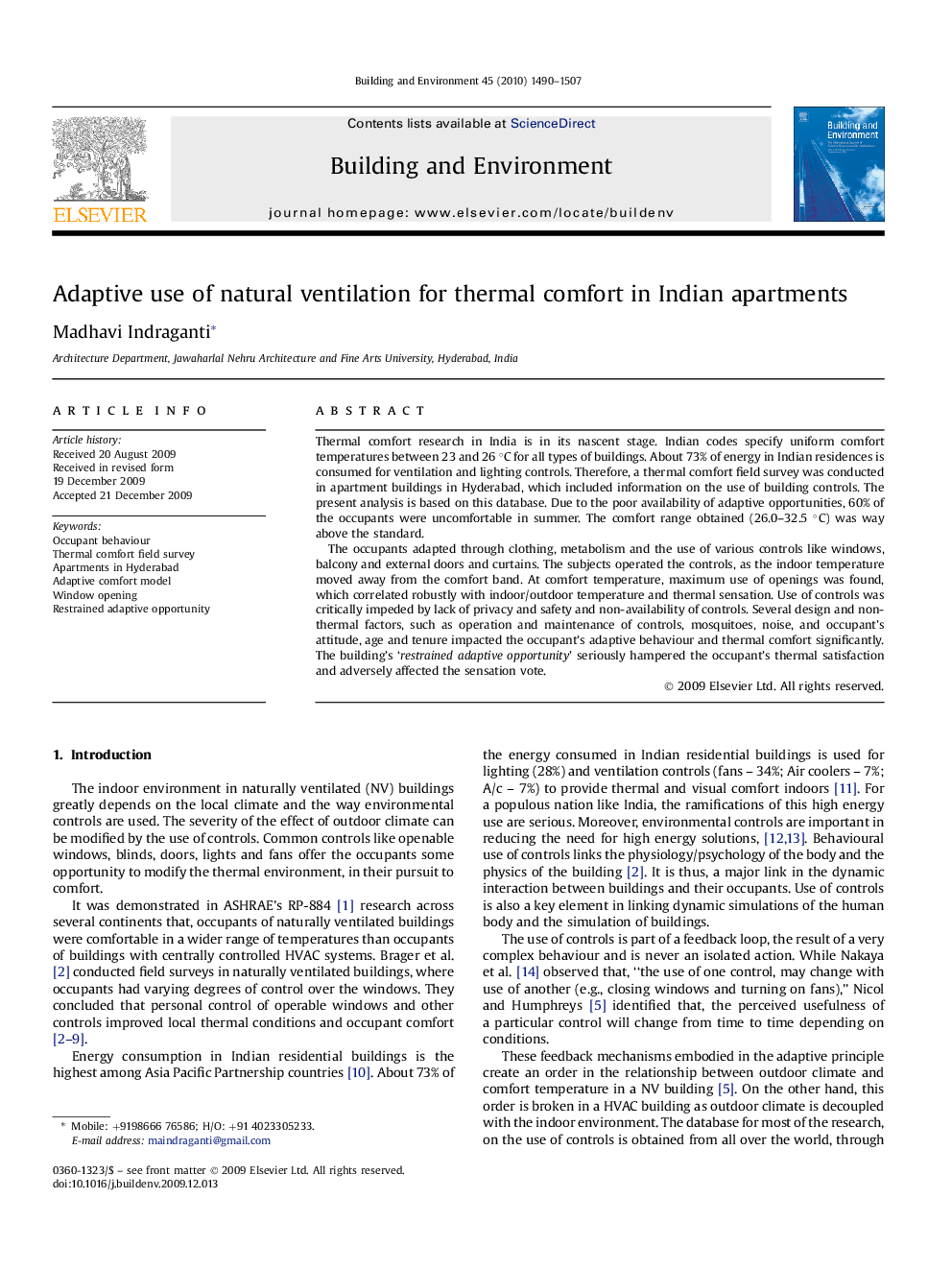| Article ID | Journal | Published Year | Pages | File Type |
|---|---|---|---|---|
| 249051 | Building and Environment | 2010 | 18 Pages |
Thermal comfort research in India is in its nascent stage. Indian codes specify uniform comfort temperatures between 23 and 26 °C for all types of buildings. About 73% of energy in Indian residences is consumed for ventilation and lighting controls. Therefore, a thermal comfort field survey was conducted in apartment buildings in Hyderabad, which included information on the use of building controls. The present analysis is based on this database. Due to the poor availability of adaptive opportunities, 60% of the occupants were uncomfortable in summer. The comfort range obtained (26.0–32.5 °C) was way above the standard.The occupants adapted through clothing, metabolism and the use of various controls like windows, balcony and external doors and curtains. The subjects operated the controls, as the indoor temperature moved away from the comfort band. At comfort temperature, maximum use of openings was found, which correlated robustly with indoor/outdoor temperature and thermal sensation. Use of controls was critically impeded by lack of privacy and safety and non-availability of controls. Several design and non-thermal factors, such as operation and maintenance of controls, mosquitoes, noise, and occupant's attitude, age and tenure impacted the occupant's adaptive behaviour and thermal comfort significantly. The building's ‘restrained adaptive opportunity’ seriously hampered the occupant's thermal satisfaction and adversely affected the sensation vote.
